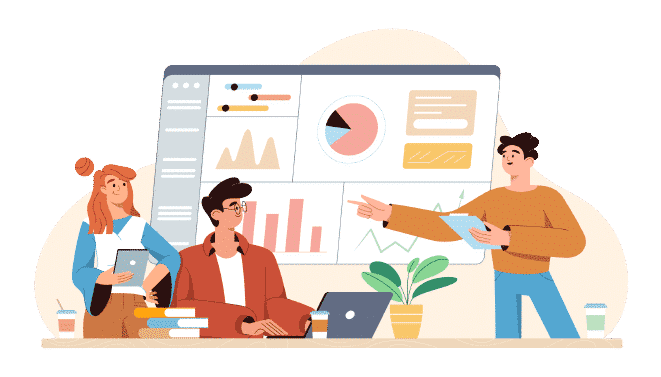Key Takeaways:
| Aspect | Summary |
|---|---|
| Importance of Sponsorships | Facebook sponsorships provide a method for creators and influencers to generate income through collaborations with brands. This also gives brands access to a wider audience through the creator’s existing following. |
| Factors Influencing Pricing | Several factors affect sponsorship rates, including audience size, engagement rate, content type, niche relevance, exclusivity agreements, and the duration of the campaign. Higher audience engagement and specialized niches generally command premium rates. |
| Pricing Models | Common pricing models include cost per mille (CPM), flat rates, performance-based pricing, and value-based pricing. The choice of model depends on the campaign objectives and the brand’s budget. |
| Negotiation Strategies | Negotiation involves demonstrating your value proposition to the brand, understanding their marketing goals, and being flexible yet firm on your minimum acceptable rate. Providing detailed analytics and case studies can support your pricing. |
| Transparency and Contracts | Maintaining transparency with your audience about sponsored content is crucial for preserving trust. A clear contract outlining deliverables, timelines, and payment terms protects both the creator and the brand. |
Instant Answers to Your Questions:
- How much should I charge for a Facebook sponsorship? The amount you charge depends on factors like your audience size, engagement rate, and the type of content you’re creating. There’s no one-size-fits-all number, so it’s important to assess your value and research industry standards.
- What pricing models are commonly used? Common models include CPM (cost per thousand views), flat rates (a set price for the entire campaign), performance-based pricing (payment based on results like clicks or sales), and value-based pricing (pricing based on the perceived value you bring to the brand).
- How do I negotiate sponsorship rates? Prepare a clear value proposition, show data on your past performance, understand the brand’s objectives, and be prepared to justify your rate based on the value you provide.
- Why are contracts important for sponsorships? Contracts protect both you and the brand by clearly outlining deliverables, timelines, payment terms, and usage rights. This minimizes misunderstandings and ensures both parties are on the same page.
Introduction
Understanding Facebook sponsorship pricing is essential for content creators and influencers looking to monetize their presence on the platform. Brands seek collaborations with individuals who have cultivated engaged communities, providing an avenue for creators to generate income and for brands to reach new demographics. However, determining fair and competitive rates can be complicated. This article provides a detailed overview of the factors that influence Facebook sponsorship pricing, common pricing models, negotiation techniques, and best practices for establishing beneficial partnerships.
Understanding the Basics of Facebook Sponsorships
A Facebook sponsorship involves a brand paying a content creator or influencer to promote their product or service to the creator’s audience. This can take several forms, including sponsored posts, videos, live streams, or even integration into ongoing content series.
Why Brands Choose Facebook Sponsorships:
- Targeted Reach: Sponsors gain access to a specific audience segment that aligns with their target market.
- Increased Visibility: Sponsorships can dramatically raise brand awareness and recognition.
- Credibility and Trust: When an influencer their audience trusts endorses a product, it can significantly boost consumer confidence.
Benefits for Content Creators:
- Revenue Generation: Sponsorships provide a vital income stream, helping creators sustain their work.
- Brand Association: Collaborating with well-known brands can enhance a creator’s reputation and attract new followers.
- Creative Opportunities: Sponsorships can provide new avenues for content creation and diversification.
Key Factors Influencing Facebook Sponsorship Pricing
Several elements come into play when deciding Facebook sponsorship pricing. Understanding these factors will enable you to set rates that accurately reflect your worth and the value you provide to potential sponsors.
1. Audience Size and Demographics
The number of followers you have is a primary factor in determining your sponsorship rate. However, quantity isn’t everything. The demographic composition of your audience – age, gender, location, interests – is equally important. Brands are often seeking to reach a very specific demographic, so if your audience aligns perfectly with their target market, you can command a higher price.
Provide detailed audience demographics in your media kit. Use Facebook Analytics to gather data on your followers’ age, gender, location, interests, and behaviors. The more specific data you can provide, the better you can justify your pricing.
2. Engagement Rate
Engagement rate, which measures the level of interaction your audience has with your content (likes, comments, shares), is a critical indicator of your influence. A high engagement rate signifies that your audience is active, responsive, and genuinely interested in what you have to say.
Calculating Engagement Rate:
Engagement Rate = (Total Likes + Comments + Shares) / Total Followers * 100
A general range for an acceptable engagement rate is 1-5%. Anything below 1% means you need to improve your content and the way you interact with your audience, while anything above 5% is generally considered excellent.
3. Content Type and Quality
The type of content you create and its overall quality also impact your pricing. High-quality, professionally produced videos or in-depth, well-written articles are typically more valuable than simple, quickly created posts. Brands are willing to pay more for content that reflects well on their image and delivers a strong message.
Types of Sponsored Content:
- Sponsored Posts: Standard posts promoting a product or service.
- Sponsored Videos: Video content featuring the brand or product.
- Live Streams: Live broadcasts where you interact with your audience while featuring the brand.
- Product Reviews: Honest assessments of a product, highlighting its pros and cons.
- Giveaways and Contests: Engaging promotions that incentivize audience participation.
4. Niche Relevance
The relevance of your content niche to the brand’s product or service is crucial. If your content focuses on fitness and health, a sports apparel brand would find your audience very valuable. The more relevant your niche, the higher the value you bring to the sponsor.
Focus on building a strong, well-defined niche. This makes your content more appealing to brands seeking to reach a specific target market. Use relevant hashtags and keywords to attract the right audience.
5. Exclusivity
If a brand requires exclusivity, meaning you won’t promote competing products or services during the sponsorship period, you can charge a premium. Exclusivity limits your ability to work with other brands, so it warrants higher compensation.
Types of Exclusivity Agreements:
- Category Exclusivity: You agree not to promote any products in the same category as the sponsor.
- Competitor Exclusivity: You agree not to promote any direct competitors of the sponsor.
- Total Exclusivity: You agree not to promote any other brands at all during the sponsorship period.
6. Campaign Duration
The length of the sponsorship campaign also affects pricing. A one-time post will cost less than a series of posts or videos spread over several weeks or months. Longer campaigns require more time and effort, justifying a higher overall rate.
Considerations for Campaign Duration:
- Scope of Work: Clearly define the deliverables and timelines for each phase of the campaign.
- Reporting Requirements: Agree on how often you will provide performance reports to the sponsor.
- Payment Schedule: Establish a payment schedule that aligns with the campaign milestones.
Common Pricing Models for Facebook Sponsorships
There are several pricing models commonly used in Facebook sponsorship pricing. Understanding these models will help you negotiate effectively and choose the best approach for your situation.
1. Cost Per Mille (CPM)
CPM, or cost per thousand views, is a common pricing model in which you charge a set rate for every thousand views your sponsored content receives. This model is best suited for campaigns focused on brand awareness and reach.
Calculating CPM:
CPM = (Total Cost / Total Impressions) * 1000
For example, if you charge \$10 CPM and your sponsored post gets 100,000 views, you would earn \$1,000.
2. Flat Rate
A flat rate involves charging a fixed fee for the entire sponsorship campaign, regardless of the number of views or engagement. This model is simple and predictable, making it appealing to both creators and brands.
When to Use Flat Rates:
- When the scope of work is clearly defined and unlikely to change.
- When you have a strong understanding of your audience and can accurately predict performance.
- When the brand prefers a straightforward, predictable pricing structure.
3. Performance-Based Pricing
Performance-based pricing ties your compensation to the results of the campaign, such as clicks, leads, or sales. This model can be highly lucrative if your content performs well, but it also carries more risk.
Types of Performance-Based Pricing:
- Cost Per Click (CPC): You get paid for each click your sponsored content generates.
- Cost Per Lead (CPL): You get paid for each lead (e.g., email signup, form submission) generated by your content.
- Cost Per Acquisition (CPA): You get paid for each sale or conversion that results from your content.
4. Value-Based Pricing
Value-based pricing involves charging based on the perceived value you bring to the brand, rather than solely on metrics like views or engagement. This model requires a strong understanding of the brand’s goals and how your content can help them achieve those goals.
Justifying Value-Based Pricing:
- Highlight your unique skills, expertise, and audience insights.
- Showcase past successes and case studies demonstrating the value you’ve delivered to other brands.
- Understand the brand’s marketing objectives and how your content can directly contribute to their success.
Negotiation Techniques for Facebook Sponsorships
Negotiating effectively is crucial for securing fair rates and establishing beneficial partnerships. Here are some techniques to help you negotiate like a pro:
1. Know Your Worth
Before entering negotiations, thoroughly assess your value. Consider your audience size, engagement rate, content quality, niche relevance, and any other unique skills or assets you bring to the table.
Creating a Media Kit:
A media kit is a vital tool for showcasing your value to potential sponsors. Include the following:
- About Me: A brief introduction to you and your brand.
- Audience Demographics: Detailed information about your followers’ age, gender, location, and interests.
- Engagement Statistics: Data on your average likes, comments, shares, and reach.
- Past Sponsorships: Examples of successful collaborations with other brands.
- Pricing Packages: Clear and transparent pricing options.
- Contact Information: Easy ways for brands to reach you.
2. Understand the Brand’s Objectives
Take the time to understand the brand’s marketing goals and what they hope to achieve through the sponsorship. This will help you tailor your pitch and demonstrate how your content can directly contribute to their success.
Asking the Right Questions:
- What are your primary marketing objectives for this campaign?
- What is your target audience?
- What is your budget for this sponsorship?
- What are your key performance indicators (KPIs)?
3. Be Confident and Assertive
During negotiations, be confident in your value and assertively advocate for your worth. Do not be afraid to walk away if the offer does not meet your minimum requirements.
Setting Your Minimum Rate:
Determine your minimum acceptable rate before entering negotiations. This will help you avoid accepting offers that undervalue your work.
4. Be Prepared to Justify Your Pricing
Back up your pricing with data and evidence. Show examples of past successful campaigns and explain how your content can deliver similar results for the sponsor.
Presenting Case Studies:
Case studies are powerful tools for demonstrating your value. Showcase past sponsorships, highlighting the results you achieved for other brands. Include metrics like increased brand awareness, website traffic, leads generated, and sales conversions.
5. Be Flexible and Open to Compromise
While it is important to advocate for your worth, also be willing to be flexible and compromise. Look for mutually beneficial solutions that meet both your needs and the brand’s objectives.
Offering Value-Added Services:
Consider offering additional services, such as extra posts, social media promotion, or content repurposing, to sweeten the deal and justify your pricing.
Best Practices for Successful Facebook Sponsorships
Following best practices can ensure that your sponsorships are successful and mutually beneficial.
1. Transparency with Your Audience
Be transparent with your audience about sponsored content. Clearly disclose when a post is sponsored using hashtags like #sponsored or #ad. This maintains trust and credibility with your followers.
Why Transparency Matters:
- It builds trust with your audience.
- It is legally required in many countries.
- It protects your reputation and credibility.
2. Create High-Quality, Engaging Content
Always prioritize creating high-quality, engaging content that resonates with your audience. Even though it is sponsored, it should still feel authentic and relevant to your followers.
Content Creation Tips:
- Understand your audience and their interests.
- Create content that is informative, entertaining, or inspiring.
- Use high-quality visuals and compelling storytelling.
- Encourage interaction and engagement.
3. Build Long-Term Relationships
Focus on building long-term relationships with brands rather than just one-off sponsorships. This can lead to more consistent revenue streams and opportunities.
Maintaining Strong Relationships:
- Communicate regularly with your sponsors.
- Provide timely and accurate performance reports.
- Be responsive to their feedback and suggestions.
- Go above and beyond to exceed their expectations.
4. Use Contracts to Protect Yourself
Always use contracts to outline the terms and conditions of the sponsorship agreement. This protects both you and the brand by clearly defining the deliverables, timelines, payment terms, and usage rights. Facebook sponsorship pricing needs to be clearly stated in the contract, leaving no room for misinterpretation.
Essential Contract Elements:
- Scope of Work: Clearly define the deliverables and timelines for each phase of the campaign.
- Payment Terms: Specify the payment amount, schedule, and method.
- Usage Rights: Clarify how the brand can use your content after the sponsorship period.
- Exclusivity Clause: Outline any exclusivity agreements.
- Termination Clause: Specify the conditions under which either party can terminate the contract.
Consult with a lawyer to ensure your contracts are legally sound and protect your interests. This is especially important for high-value sponsorships.
5. Track Your Results
Monitor and track the performance of your sponsored content. This will provide valuable data for future negotiations and help you demonstrate the value you bring to sponsors.
Key Metrics to Track:
- Impressions: The number of times your content was viewed.
- Engagement: Likes, comments, shares, and clicks.
- Reach: The number of unique users who saw your content.
- Website Traffic: The number of visitors who came to the brand’s website from your content.
- Conversions: The number of leads or sales generated by your content.
Conclusion
Determining fair Facebook sponsorship pricing involves considering various factors, from audience demographics and engagement rates to content quality and campaign duration. By understanding common pricing models, mastering negotiation techniques, and adhering to best practices, content creators can establish beneficial partnerships that generate revenue while delivering value to sponsors. Transparency, high-quality content, and clear contracts are crucial for building trust and ensuring long-term success in the world of Facebook sponsorships.
 Omar is a digital marketing enthusiast with a keen eye for analytics and emerging trends. When he's not diving into the latest marketing strategies, he enjoys coding side projects and exploring innovative tech solutions.
Omar is a digital marketing enthusiast with a keen eye for analytics and emerging trends. When he's not diving into the latest marketing strategies, he enjoys coding side projects and exploring innovative tech solutions.












